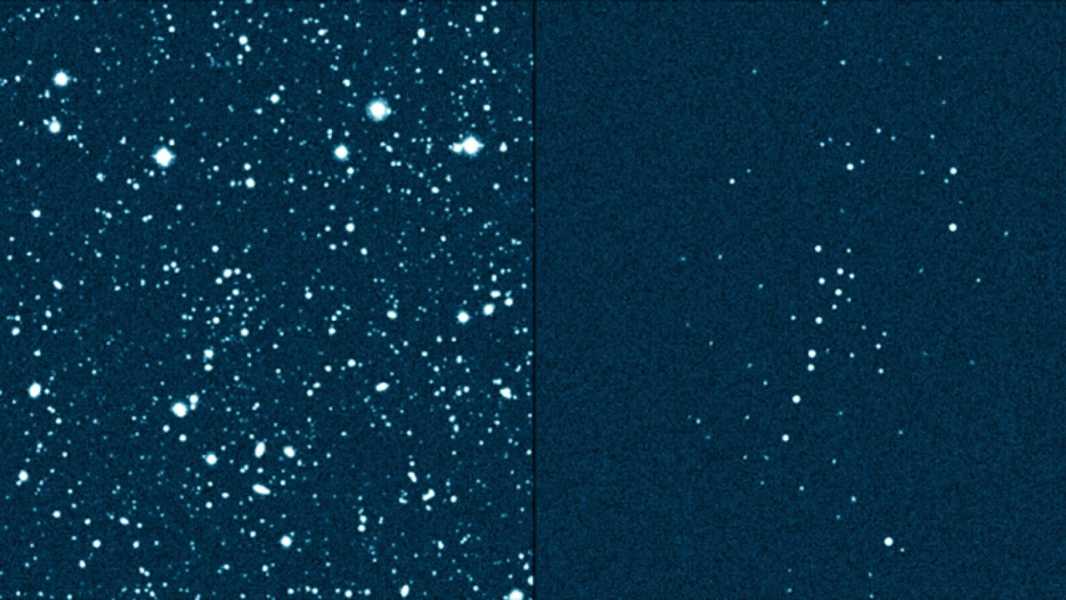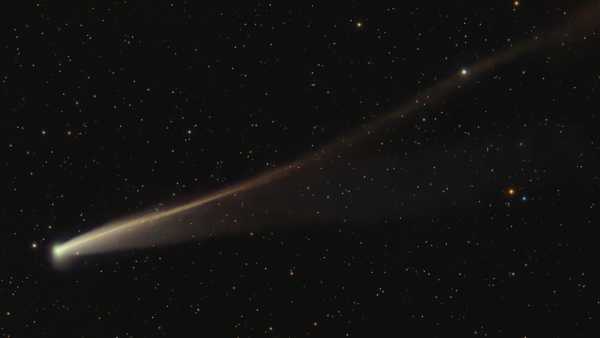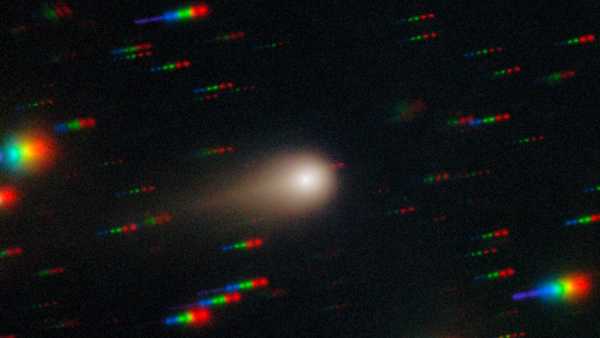
(Image credit: CFHT/S. Gwyn/S. Smith)
How to tell a galaxy from a simple star cluster? It's pretty simple, isn't it? A galaxy is a huge collection of millions or billions of stars, while star clusters consist of only a few thousand. However, this approach will not make you an expert in astronomy! But seriously, the boundary between a galaxy and a star cluster is not always obvious. Let's look at an example – UMa3/U1.
Galaxies like Andromeda and the Milky Way are easy to spot. They are huge, gravitationally bound, and dominated by dark matter. Star clusters like the Pleiades are also easy to spot. These are loosely bound groups of stars that contain no dark matter. However, for smaller dwarf galaxies, known as ultra-faint dwarfs (UFDs), the line becomes blurry.
UFDs are made mostly of dark matter. For example, about 85% of the mass of the Milky Way is dark matter. However, an ultra-faint dwarf galaxy can contain a thousand times more dark matter than luminous matter. That’s why they’re so insignificant. Because UFDs often contain some of the oldest stars in the universe, astronomers are excited to study them for clues about galaxy formation. That brings us to UMa3/U1.
Even the name tells us there is a problem. If this object is indeed a dwarf galaxy, it should be called Ursa Major III, since it is a satellite in the constellation Ursa Major. If it is an ancient star cluster, it should be called UNIONS 1, since it was found by the Ultraviolet Near Infrared Optical Northern Survey (UNIONS). If it is a galaxy, it would be the smallest and most dark matter-rich galaxy ever discovered. If it is a star cluster, at about 11 billion years old, it would be the oldest known star cluster.
UMa3/U1 is tiny. It’s only 20 light-years across, contains about 60 stars, and has an apparent mass of just 16 solar masses. By comparison, the Pleiades is about the same size, but contains over 1,000 stars and 800 solar masses. So the big question for UMa3/U1 is whether it’s dominated by dark matter.
In a recent study, the team conducted several tests to distinguish star clusters from dwarf galaxies. Their first approach was to analyze the dynamics of the visible stars, suggesting that it might be a star cluster. Given the known motions of the stars, the team modeled how long it would take for the stars to break free, a process known as evaporation. According to their modeling, the cluster could continue for another 2-3 billion years. That’s a significant fraction of its estimated age of 11 billion years, indicating that U1 is simply a stable star cluster.
The second test the team used is called a mass function. This is a plot of the cluster's mass versus distance. If it's a cluster, the mass should be more evenly distributed, whereas if it's a galaxy, the stars should be concentrated in the center. Here, the data is less compelling. The distribution of visible stars fits the cluster model fairly well, but for a galaxy, the central stars would mostly be white dwarfs and neutron stars, which are too dim to detect with current observations.
Overall, the evidence points to UMa3/U1 being a star cluster, but the team notes that more observations of other UFDs will be needed to draw a definitive conclusion. Fortunately, future telescopes like the Vera Rubin Observatory will eventually discover many more faint dwarfs.
The original version of this article was published on Universe Today.
TOPICS Milky Way
Sourse: www.livescience.com





